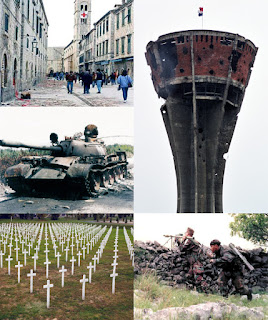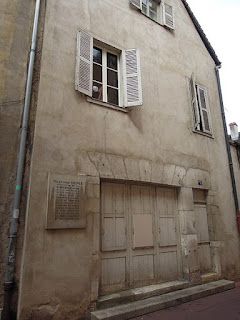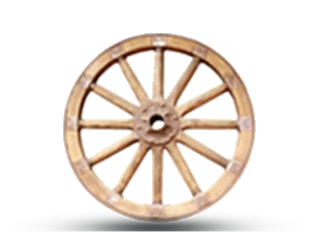Croatian War of Independence
The Croatian War of Independence was fought from 1991 to 1995 between Croat forces loyal to the Government of Croatia—which had declared independence from the Socialist Federal Republic of Yugoslavia (SFRY)—and the Serb-controlled Yugoslav People's Army (JNA) and local Serb forces, with the JNA ending its combat operations in Croatia by 1992. In Croatia, the war is primarily referred to as the "Homeland War" (Croatian: Domovinski rat) and also as the "Greater-Serbian Aggression" (Croatian: Velikosrpska agresija).[25][26] In Serbian sources, "War in Croatia" (Serbian Cyrillic: Рат у Хрватској, romanized: Rat u Hrvatskoj) and (rarely) "War in Krajina" (Serbian Cyrillic: Рат у Крајини, romanized: Rat u Krajini) are used.
A majority of Croats wanted Croatia to leave Yugoslavia and become a sovereign country, while many ethnic Serbs living in Croatia, supported by Serbia, opposed the secession and wanted Serb-claimed lands to be in a common state with Serbia. Most Serbs sought a new Serb state within a Yugoslav federation, including areas of Croatia and Bosnia and Herzegovina with ethnic Serb majorities or significant minorities, and attempted to conquer as much of Croatia as possible. Croatia declared independence on 25 June 1991, but agreed to postpone it with the Brioni Agreement and cut all remaining ties with Yugoslavia on 8 October 1991.
The JNA initially tried to keep Croatia within Yugoslavia by occupying all of Croatia. After this failed, Serb forces established the self-proclaimed proto-state Republic of Serbian Krajina (RSK) within Croatia which began with the Log Revolution. After the ceasefire of January 1992 and international recognition of the Republic of Croatia as a sovereign state, the front lines were entrenched, the United Nations Protection Force (UNPROFOR) was deployed, and combat became largely intermittent in the following three years. During that time, the RSK encompassed 13,913 square kilometers (5,372 sq mi), more than a quarter of Croatia. In 1995, Croatia launched two major offensives known as Operation Flash and Operation Storm; these offensives effectively ended the war in its favor. The remaining United Nations Transitional Authority for Eastern Slavonia, Baranja and Western Sirmium (UNTAES) zone was peacefully reintegrated into Croatia by 1998.
The war ended with Croatian victory, as it achieved the goals it had declared at the beginning of the war: independence and preservation of its borders.
Approximately 21–25% of Croatia's economy was ruined, with an estimated US$37 billion in damaged infrastructure, lost output, and refugee-related costs.
Over 20,000 people were killed in the war, and refugees were displaced on both sides. The Serbian and Croatian governments began to progressively cooperate with each other, but tensions remain, in part due to verdicts by the International Criminal Tribunal for the former Yugoslavia (ICTY) and lawsuits filed by each country against the other.
In 2007, the International Criminal Tribunal for the former Yugoslavia (ICTY) returned a guilty verdict against Milan Martić, one of the Serb leaders in Croatia, for having colluded with Slobodan Milošević and others to create a "unified Serbian state". Between 2008 and 2012, the ICTY had prosecuted Croatian generals Ante Gotovina, Mladen Markač and Ivan Čermak for alleged involvement in the crimes related to Operation Storm. Čermak was acquitted outright, and the convictions of Gotovina and Markač were later overturned by an ICTY Appeals Panel. The International Court of Justice dismissed mutual claims of genocide by Croatia and Serbia in 2015. The Court reaffirmed that, to an extent, crimes against civilians had taken place, but it ruled that specific genocidal intent was not present.
Follow me at unveilling hidden facts for more historical eventsevents. ..




Comments
Post a Comment